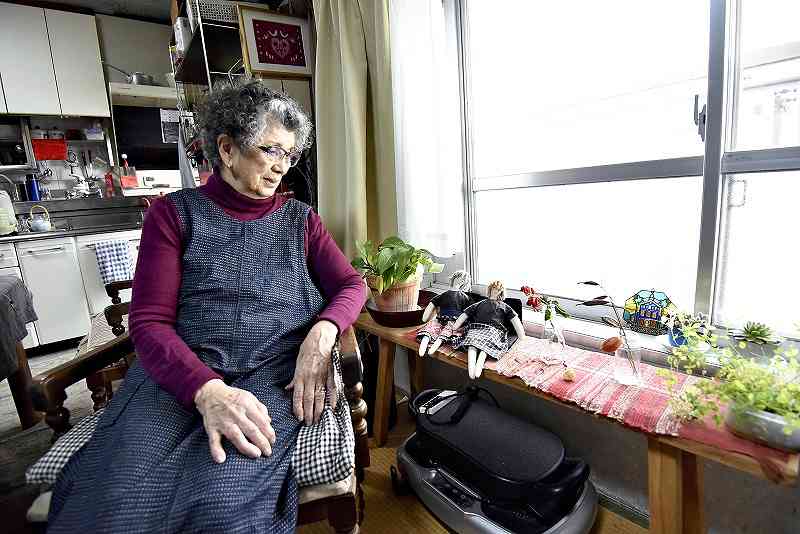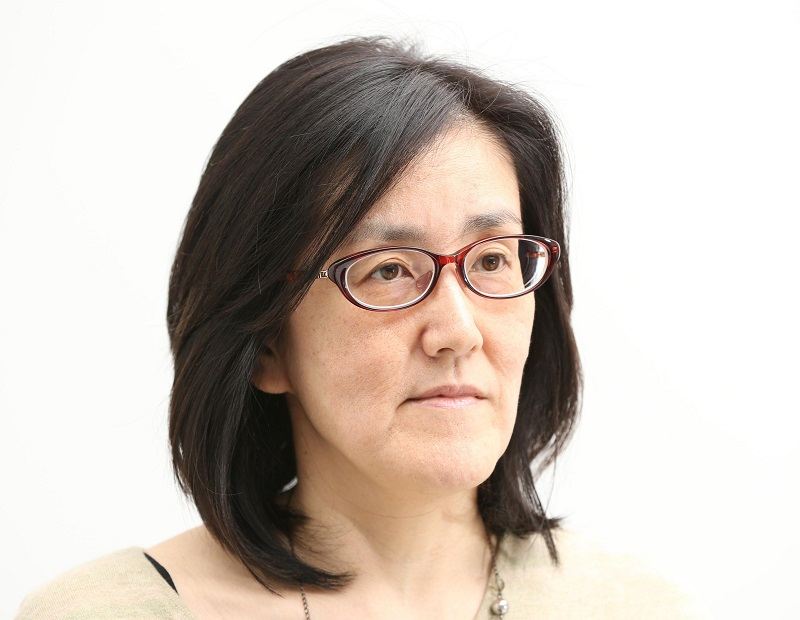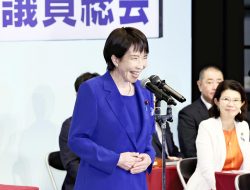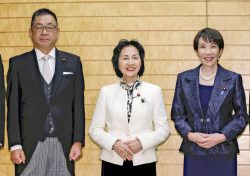
Michiko Tara sits by the window in her apartment in Kanagawa Prefecture in November.
8:00 JST, December 17, 2022
Books by elderly women describing how to enjoy life with ingenuity and without spending much money have recently become popular in Japan.
One such author, Michiko Tara, is now 88. She has lived in a 50-square-meter public rental apartment in Kanagawa Prefecture, about an hour and a half from central Tokyo by train, for more than half a century. Having lost her husband eight years ago, she now enjoys living alone for the first time in a very long time. Her daily routine includes morning physical exercise, gardening, making simple meals, sewing and reading. She also occasionally enjoys mahjong with friends and dining out with her children and grandchildren. In August 2020, with the help of her grandson, she started a YouTube channel about her life and soon became very popular. In March, a book was published introducing her life.
According to the publisher, it has so far sold 120,000 copies, most of which were bought by women in their 60s and 70s. It has received comments from readers saying they are encouraged by Tara, who lives happily in good health even though she is old and single.
The responses to Tara’s book suggest the degree of anxiety that elderly women feel about their future.
As of 2021, Japan had 36.21 million people aged 65 and over, accounting for 28.9% of the total population. The average life expectancy is 87 for women, compared to 81 for men. Roughly 30% of households consisting only of people 65 and over are women living alone. The days when it was common for elderly women to live with their sons’ families are long gone.
Even so, people in their 70s and older are generally well off. This is because their working years coincided with Japan’s economic growth and the bubble economy, and a high percentage of them own their homes and have relatively large savings. Tara, too, said her pension is enough to support her life.
In contrast, those in their 50s and younger are expected to face a more difficult retirement. Another author, Shion, 71, pinpoints these concerns.
Her fixed income is a monthly pension of a little less than ¥50,000 (about $365). Of that, she spends ¥10,000 on food and ¥9,000 on utilities. While revealing these details of her household budget, her book describes how she makes a living in Tokyo.
The pension of ¥50,000 per month is a small amount, but it is not unusual. The average monthly pension amount paid to self-employed and non-regular workers such as her is about ¥56,000 per month. This is about ¥90,000 less than the amount paid to company employees who are also covered by the employees’ pension insurance system.
According to the publisher, the book sold 83,000 copies and most readers are women in their 40s and 50s, who have started thinking about their retirement life. “They are worried that their pensions will be less than those of the current elderly and read this book as a reference,” said Kumiko Komiya, the managing director of the publisher.
Under Japan’s pension system, the pension benefits are financed by contributions being paid in by the younger generations, plus government subsidies and reserves. To make the system sustainable despite the declining number of births and the aging of society, a 2004 pension system reform fixed the contribution rate and introduced a mechanism to balance the books by reducing benefits as the percentage of the elderly in the population grows. “If the population ages at the current pace, the real value of pension benefits will be 30% to 40% lower in 2050 than it is today,” said Kunio Nakashima, a senior research fellow at the NLI Research Institute.
Living on that amount of money is almost impossible for anyone. “Frankly, it would be tough if my pension benefits were reduced further,” says Shion, who saves money by frequenting a local inexpensive grocery and a 100 yen store, as well as altering her own clothes.
In discussions on pension reform that began in October at a government subcommittee, the Health, Labor and Welfare Ministry proposed changing the period for payment of national pension contributions from the 40 years through age 59 to the 45 years through age 64. According to Nakashima, if the period is extended for five years, the full pension per year on the national program, currently about ¥800,000, would increase to about ¥900,000.
But he cautions: “The pension system itself is a mechanism for distributing money and a change to it does not increase the funds. The only way to maintain or increase the level of benefit is to somehow halt the declining births and increase the future population.”
It has already been half a century since the fertility rate—the number of babies an average woman will have in her lifetime—began to decline below the population replacement level. Still, there was a somewhat optimistic mood in society as recently as a decade ago. This was due, in large part, to the fact that the “baby boomer juniors,” a large population cohort born from 1971 through 1974, were still just young enough to have babies. In urban areas, there was even a problem of young children waiting for admission to daycare centers.
However, since then, the fertility rate has remained stagnant at 1.3 to 1.5, and the number of young women has declined. Young people are finding it more difficult to marry for economic and other reasons, and the number of births has been declining almost consistently. Vacancies in daycare centers in urban areas are also becoming more noticeable.
The government has recently announced measures supporting the child-rearing generation, such as increasing the lump-sum childbirth benefit and distributing coupons to households with newborn babies, but it appears to be too little and too late. As obstetricians and gynecologists go out of business and schools are consolidated in areas with fewer children, Japan will become an increasingly difficult society in which to have and raise children.
It seems likely that one day in the future, people will pick up a copy of Shion’s book and be surprised to find that there was a time when they could have received a pension of ¥50,000 per month. In the end, the only thing each of us can do in the current situation will be to save money and continue working after reaching 65.
Political Pulse appears every Saturday.

Ikuko Higuchi
Higuchi is a staff writer in the Lifestyle News Department of The Yomiuri Shimbun.
"Editorial & Columns" POPULAR ARTICLE
-

Violations of Subcontract Law: Major Automakers Must Eliminate Old Practices
-

Local Governments’ Tax Revenues: Devise Ways to Correct Imbalances in Tax Sources
-

5 Japanese Business Dinner Mistakes to Avoid — and What They Taught Me About Business in Japan
-

Heavy Rains in Asia: Support for Victims, Flood-Control Measures Urgently Needed
-

Rice Coupons: A Misguided Approach to Countering Rising Prices
JN ACCESS RANKING
-

Keidanren Chairman Yoshinobu Tsutsui Visits Kashiwazaki-Kariwa Nuclear Power Plant; Inspects New Emergency Safety System
-

Imports of Rare Earths from China Facing Delays, May Be Caused by Deterioration of Japan-China Relations
-

University of Tokyo Professor Discusses Japanese Economic Security in Interview Ahead of Forum
-

Japan Pulls out of Vietnam Nuclear Project, Complicating Hanoi’s Power Plans
-

Govt Aims to Expand NISA Program Lineup, Abolish Age Restriction

























